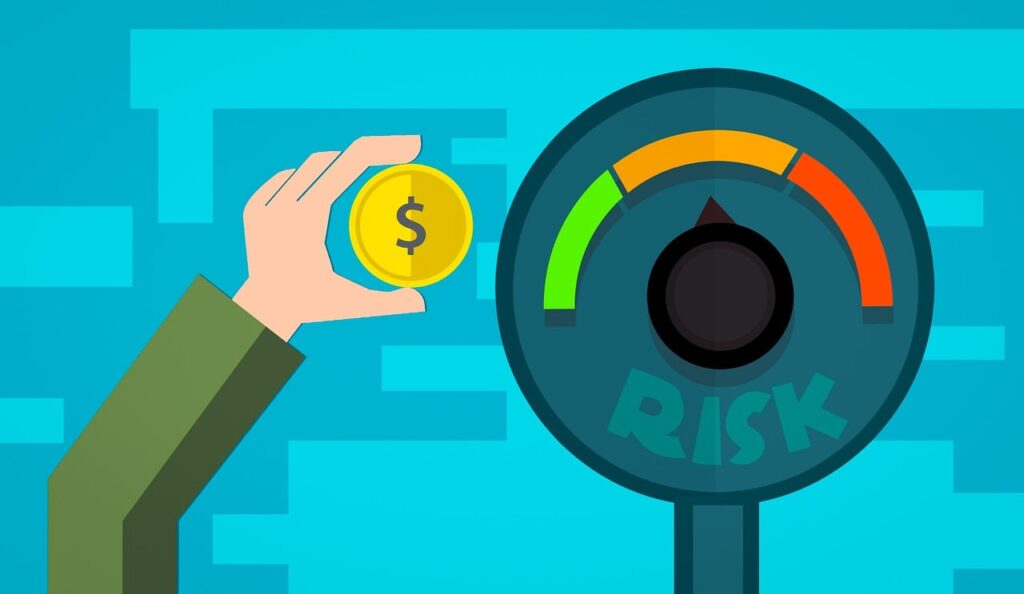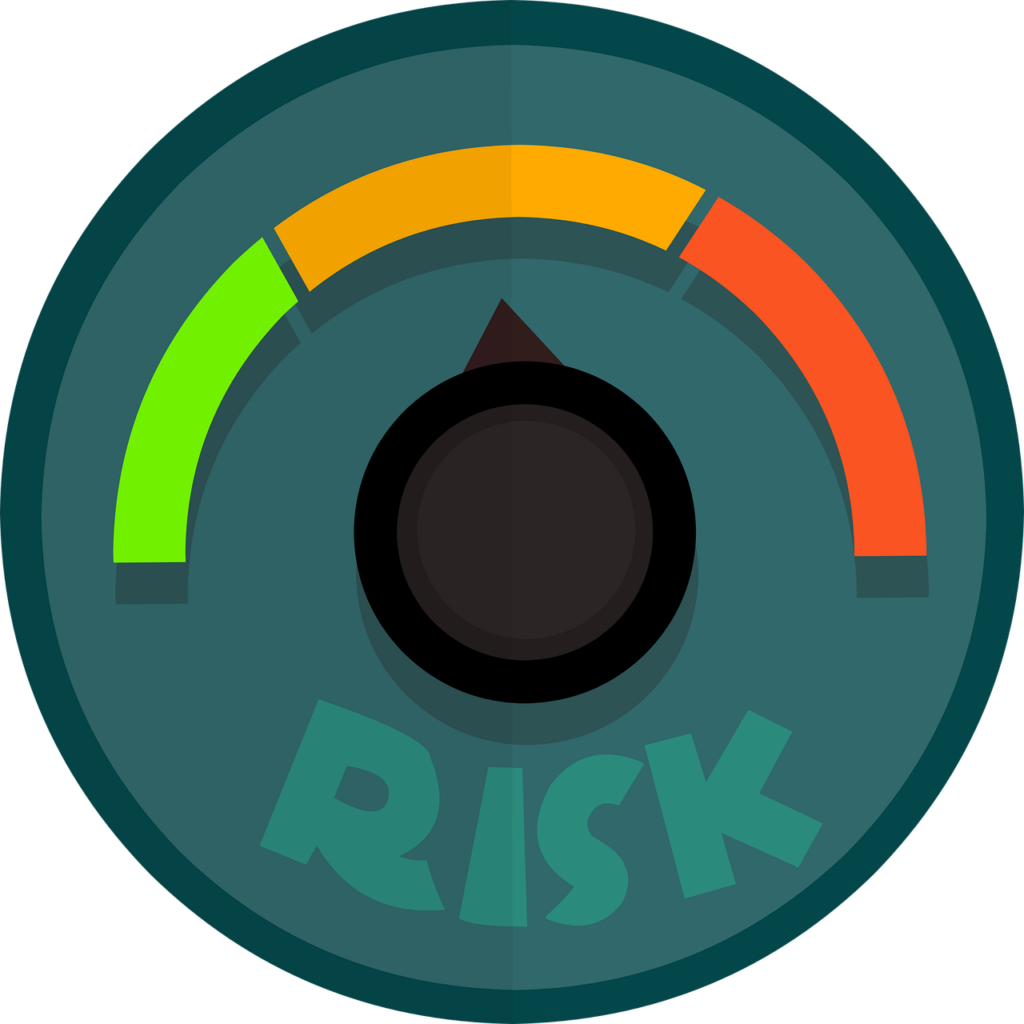When it comes to investing, pretty much anything you put your money into has one or more of the various types of investment risks. When most people think of an investment with risk, they picture an investment where there is a chance that they could lose some or all of their money. This is one type of risk. But there are also different types of risks to what most would consider to be safe investments. There are a whole host of different risks when it comes to investments. Here is a list of the most common risk types.
Market Risk

Market risk is probably the type that most people think of first when considering different types of investment risks. This is basically the risk that the value of the investment could go down in value based on the market price of the investment. This is commonly associated with investments in the stock market. For example, say you purchased shares of stock in a specific company. Then that particular company wasn’t doing well financially. This typically causes the price of the stock to go down.
Now all stocks will have fluctuations in the price of their shares, some more than others, but the hope for the shareholder of that stock is that over time the stock will go up more than it goes down and if the shares are held for a long period of time, such as for 10 years, the hope for the investor would be that the shares will be higher in 10 years than when they were first purchased.
This risk can also apply to investment products such as Mutual Funds and Exchange Traded Funds (ETF’s) as they are tied to the value of the price of shares of the companies stock that are in those funds. Though the risk typically is lower because the risk is spread out over a large number of companies. So if one or several of the companies go down in value, some of the others in the fund may not, or even go up in value which offsets the decrease of certain companies stock value.
Where this risk can affect an individual investor the most is if the money in that investment is needed at a time when the value of the investment is down. If you have to sell the shares in a company because you need the money when the stock price has just fallen 20-30% or more, that can have a big affect on how much you would get from that investment when you sold the shares.
Let’s use a real world example with a stock of a random company. Say for example you purchased 100 shares of stock in Disney in March of 2021 at a price of $200 a share or a total investment of $20,000. You bought the shares because Disney had been doing so well up to that point and your hope was that it would continue to go up. You planned on holding the shares for a number of years until you needed the money. You ended up needing that money for something that came up in October of 2023 and sold the shares for $80 because that was the share price when you needed the money. You would have lost $12,000 of your $20,000 investment or 60% in that case.
New to investing and wondering how to get started? Read our free beginners guide to investing.
Liquidity Risk

Certain types of investments have what is called liquidity risk. These investments have restrictions on when you can access the money that you’ve invested. It may be that it’s an investment that is difficult to sell in a fairly short amount of time or it may be an investment that doesn’t allow you to sell until after a set amount of time.
Real Estate would be one example of an investment that has liquidity risk. If you purchase a rental property as an investment, even though you have the option of selling that property whenever you want, it isn’t a quick process. In some cases there would be a period of several months from the time you decide to sell the property until the property sells and the sale closes for you to get your money from the sale.
Another example of an investment with liquidity risk would be some of these relatively newer investment platforms where you can invest money into something where you would own partial ownership of something such as real estate or an individual company. These types of investments often don’t have the option of being able to sell your share of the investment until it matures. There are different variations on what the rules are for these depending on the investment platform, but oftentimes you will have to end up holding the investment for anywhere from 12 months to several years before the investment closes for you to redeem your investment money from them. Often you can get higher than average returns from these investments as long as you are prepared that the money will be tied up for a while in most cases. If you invest in these platforms, you’ll want to make sure that it’s money you’re fairly certain that you won’t need the money until the investment matures. Examples of this type of platform would be Real Estate Crowdfunding sites such as Equity Multiple, Yieldstreet, GroundFloor, and Realty Mogul among others.
Concentration Risk

Having too large of a percentage of your investments in one category of investment types can raise the Concentration Risk level. For example, if you had 90% of your available investment funds in stocks and the overall stock market went down 30%, this would be a large drop in the total value of your investment portfolio.
The way to reduce Concentration Risk in your investments is through diversifying your investments into non related assets. It doesn’t necessarily mean that you have to put a large portion of your investments in assets that have a low rate of return, though this would potentially lower your risk overall. It just means that you might have a lower percentage in the stock market, having a certain percentage in bonds, a percentage in real estate and so forth. It is less likely that when the stock market makes a big drop that all of the asset categories would drop at the same time. It is possible for that to happen in certain situations, but at least it reduces the risk of everything going down at once.
Inflation Risk

Inflation Risk is the risk that the rate of return on your investments won’t keep up with the rate of inflation. Out of all the different types of investment risks, this one mostly affects what would be considered low risk or safe investments. Average rate of inflation is typically around 3% per year. This can fluctuate greatly from year to year. Some years it’s lower than three percent, some years it’s even a negative percent which means prices actually go down rather than up. And some years the inflation rate can be significantly higher than 3%.
If your investments over a longer time period have a rate of return of less than 3%, then typically the value won’t be keeping up with the rate of inflation. So to break even with the inflation rate, you would need to average about 3% on your investments. What this means for the long term is that prices overall will double about every 20 years.
You may have a low tolerance for risk in your investments and have the tendency to keep the money in what are considered “safe” investments. The risk with that is that the value in your investments would be eroded by inflation.
As an example, say you put $100,000 into a savings account generating 2% interest per year. After 20 years, the value of that account would be just under $150,000. This may sound good, but if we were to have an average inflation rate of 3% per year over those 20 years, it would take about $182,000 to buy what $100,000 would have been able to buy 20 years earlier.
In contrast to that, if you were to put the same $100,000 into investments that would generate an average rate of return of 5% per year, after 20 years, your account be worth about $271,000 and if you were to get an average 10% rate of return the account would be worth nearly $733,000.
Interest Rate Risk
Interest Rate risk is primarily related to bond type investments. It can affect the overall stock market indirectly though. The way that this affects the value of bonds is if interest rates overall were to go up, the value of the bonds that you would hold would fall, at least in the secondary market. It wouldn’t affect the interest rate of the bond directly, so if you held the bonds to the end of the term, you would still generate the same income from them. But if you were to want to sell the bonds before the maturity date, the value would be lower.
Many Other Types of Investment Risks
There are other types of investment risks, but these are the most common. They are also the ones that affect the average investor the most. Some of the other types would be Credit Risk, Reinvestment Risk, Regulatory Risk, Foreign Investment Risk among many others.
The main thing to be aware of is to focus on diversifying your investments. This spreads the risk out over a variety of different investment types. In most cases this will lower the overall risk to your portfolio over time.
Disclaimer
The content provided on Everyday Money Manager is information to help users become financially literate. It is neither tax nor legal advice, is not intended to be relied upon as a forecast, research or investment advice, and is not a recommendation, offer or solicitation to buy or sell any securities or to adopt any investment strategy. Tax, investment and all other decisions should be made, as appropriate, only with guidance from a qualified professional. We make no representation or warranty of any kind, either express or implied, with respect to the data provided, the timeliness thereof, the results to be obtained by the use thereof or any other matter.
